The content of the article
- 1 For what reason do lemon leaves fall?
- 2 How lighting affects
- 3 Much water
- 4 Lack of water
- 5 The soil is exhausted
- 6 It's cold for the plant
- 7 Diseases and pests leading to leaf shedding
- 8 What to do when you see a lemon flying around
- 9 Traditional methods of getting rid of pests
- 10 Video: why room lemon turns yellow and flies around
Few people today can be surprised by exotic flowers or plants grown on the window. Quite often, lemons are bred on window sills. The northern Russian climate does not suit these natives of far-off tropical countries in the best way, because when changing conditions favorable for growth lemon trees begin to hurt.
Diseases and ailments are not the same: it happens that the leaves fall completely, and sometimes they remain in place, but become yellow and dried, folding up into a tube. The flower growers engaged in the cultivation of lemons for a long time, are well aware of the reasons for the leaves to fall and are aware of what actions should be taken in such situations than how to help the tree. And for beginners, these subtleties and wisdom are unknown - they have not yet encountered such things. Here for them is described below a review of the causes that contribute to the appearance of various troubles, and describes how it is subsequently possible to restore the plant to life.
For what reason do lemon leaves fall?
In the homeland of citrus fruits, there are always even favorable climatic conditions favorable for growth without sharp jumps in temperature. And once in the harsh northern regions, where the temperature rises and falls, and the illumination is constantly different, lemons cannot acclimatize and begin to hurt. Sometimes all foliage falls off the plants, sometimes the leaves remain on the tree, but turn yellow, dry and curl up into a tube. Here are the reasons why such negative changes occur:
- Lack of light.
- The plant is flooded and the soil is very moist.
- Lemon is rarely watered, not enough moisture.
- Lack of necessary substances for growth in the earth.
- The room is dry and hot.
- The room is cold, the plant freezes.
- Large temperature differences.
- The plants feel unwell due to the fact that they put it in another place.
- Transplant from one pot to another.
- Too much fertilizer.
In order to find out the cause of citrus leaves falling, you should carefully look at the above factors. Check the soil for the presence or lack of moisture in it, whether parasites have wound up in the plant, pay attention to the humidity and temperature of the room in which the lemon is standing. Comparing all the factors, it will be possible to find the answer why the plant lost its leaves.
How lighting affects
Dendrologists consider homemade lemons "conditionally deciduous." What does it mean? And this concept means the following - with the onset of winter, the lemon does not discard the leaves, but only does this, reacting to some external irritating factor.
Advice! Most of all, lemon suffers from a lack of light, so in winter, when the illumination is scarce and the day is short, it is worth supplementing natural lighting with artificial. And the leaves will cease to crumble and become yellow.
To make the lemon better lit in winter, several methods can be applied:
- Put a pot of plants on the window facing south. A lot of light falls on the south side, and this factor will please the light-loving lemon.
- Put 2-3 mirrors around the plant. They will reflect the light, and the lemon will no longer experience a shortage of vivid sensations.
- After sunset, turn on the lamps, prolonging daylight hours.
If the lighting is improved and extended, and the lemon leaves along with the flowers still fall, then the reason lies in something else.
Much water
One of the reasons leading to the falling leaves of a lemon is that the soil acidifies, which happens because of the large amount of moisture in it. Too moist soil becomes too hard and oxygen cannot reach the roots. And this is bad for the plant, and it falls into stress. Small thin roots dry and die. A tree that does not receive nutrition cannot provide the entire crown with the necessary substances. As a result, the newly hatched shoots dry up, and the crown flies around and becomes naked.
Lack of water

But it’s also not worth sparing water for irrigation of lemon - lack of water does not lead to anything good either. In a tree growing in dry earth, the leaves also begin to turn yellow, curl, and fall off. The consequences of a lack of life-giving moisture are still the same - small roots die off, and the plant cannot absorb substances necessary for life from the soil. Which makes the lemon stressful and slows the circulation of juices through the tissues of the plant. As a result, shoots growing on top and foliage have nothing to eat, so you have to drop part of the crown.
Trying to bring to life a long time not watered lemon, you can not begin to immediately fill the soil. Because excess water (this was already discussed) destroys the roots of the plant no less than a lack of moisture.
Therefore, in this case, the resuscitation of the plant should be carried out gradually: spray on the leaves with water, adding a little moisture to the soil. Daily amount of water needs to be increased. Then everything will be in order - the earth will slowly become wet, the amount of moisture will increase, and the lemon will recover.
The soil is exhausted
In the summer, in the warm season, the lemon tries to give as many shoots as possible. In order for them to grow and develop, we need substances that nourish the plants. And the flower growing in a tub or a pot has nowhere to take the necessary minerals from; they cannot appear in the ground from nowhere. Here, the owner needs to feed citrus from time to time.
Nitrogen-based substances, phosphates, as well as fertilizing based on potassium salts must be added to the ground. In addition, it is necessary to fertilize the soil with humus and various baits based on iron and zinc. As soon as a lemon lacks any of the above elements, it will begin to lose leaves. You can see the lack of these nutrients by the following signs:
- Leaves are covered with yellow spots or turn yellow completely.
- The leaves look down, giving the impression of lethargy and dullness.
- Sometimes there is a change in the shape of the foliage.
- It is clearly seen that the leaves and young shoots dry out.
If a lemon has left foliage due to a deficiency of micronutrients, then it is not difficult to return the tree back to its former healthy life. It is only enough to add nutrients to the soil every month according to the scheme indicated on the package. And if the leaves of the lemon have fallen for some other reason, then you should look at the climate prevailing in the room. Maybe it's him?
It's cold for the plant
It has already been said that lemon is not a fan of high temperatures. And for him to winter, he needs a low temperature regime. But this does not mean that the plant needs to be taken out to the balcony - on the street it will freeze completely. The best thing is to put it where it is not warmer, plus ten degrees. If it is colder, then the lemon will simply throw off the leaves.
But when you see that the lemon is frozen, you do not have to hastily bring it into a warm room - a sharp change in temperature will affect the exotic resident of the room and it will die. All you have to do is gradually raise the temperature around the tree - say, put heaters.
Care should be taken to ensure that there are no drafts in the room. - They also lead to a change in temperature. And it has already been written that temperature changes negatively affect the crown of a lemon.
Diseases and pests leading to leaf shedding
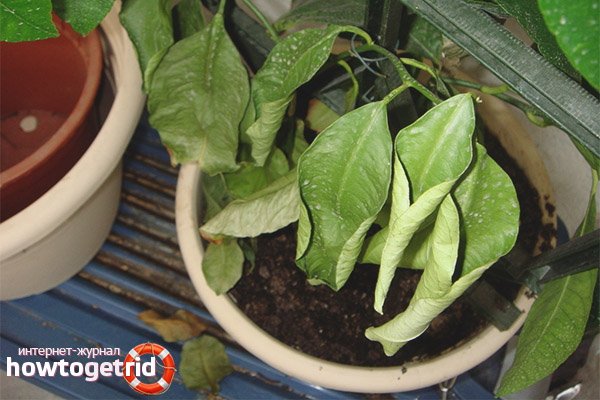
No matter how the owner correctly cares for the lemon tree, all the same - contrary to the efforts of the owner, it may part with leaves and flowers. Why is that? And everything happens due to the fact that some disease settles on a tree or parasites occupy a lemon. Diseases and pests will be discussed further.
There are many pests who want to live in a lemon. The plant contained in the room is most often annoyed by spider mites, common aphids and scale insects.
There are several types of pests, these are the most common:
- Aphid. To determine its presence is very simple - the entire inner side of the leaf is covered with a parasite. Which leads to its gradual twisting
- Spider mite. Perhaps the most common pest. Usually it moves to a lemon tree from the flowers standing next door. It can be seen that the branches are decorated with curly strings of web, and the leaves begin to fall sharply from the tree.
- Shield. Its main nutrition is lemon tree juice, the presence of this pest gives out the presence of small holes on the leaves.
What to do when you see a lemon flying around
If the cause was the presence of parasites on the plant or it was infected with some fungus, then in this situation it is preferable to use special medications designed to get rid of such misfortunes.
Traditional methods of getting rid of pests
Of course, plant-affecting diseases and attacking parasites are best treated in the traditional way - using drugs. And if there is no opportunity and desire to spend money on drugs, then there are other folk ways to get rid of pests.
One of them is a soap solution. Pests are very afraid of ordinary soap. It is worth making a saturated solution with the addition of soap (it does not matter, household or toilet), and spray them with all the places occupied by parasites. Immediately after the first application, the results will become noticeable - there will be much less parasites, and the lemon will perk up. The procedure, repeated three to four times, will save citrus from parasites for a long time.
Video: why room lemon turns yellow and flies around

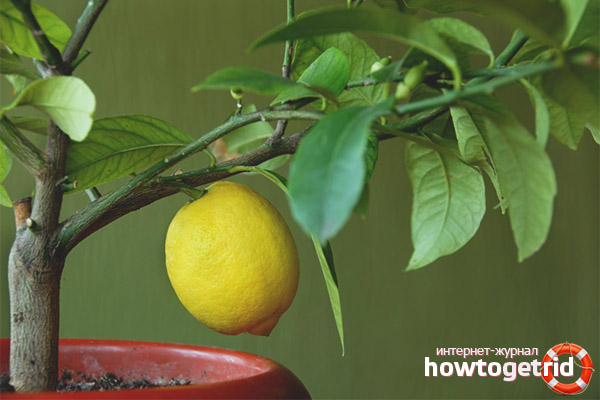
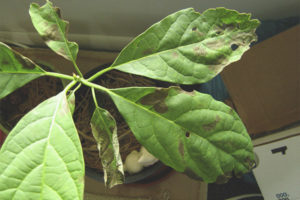
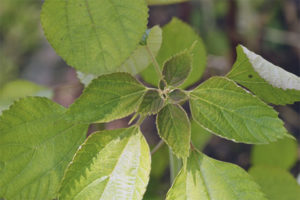

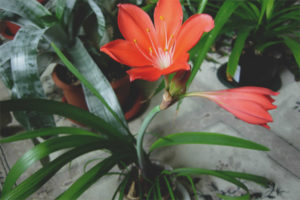

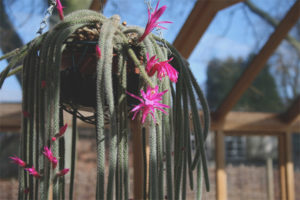
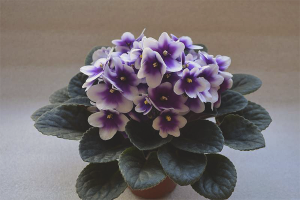
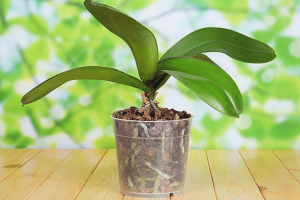
Submit